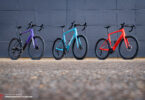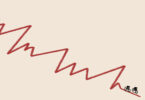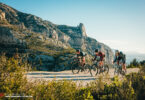Glory is painful. Sharp stones, cold water, dark clouds. We wade into the waves on shaky legs. Someone shows us a little mercy and raises a camera. Click. The finish line photo. Here we are in Lake Garda. Three guys in their mid-40s, with unshaven calves, and awkward grins. Happy yet sentimental at the same time.
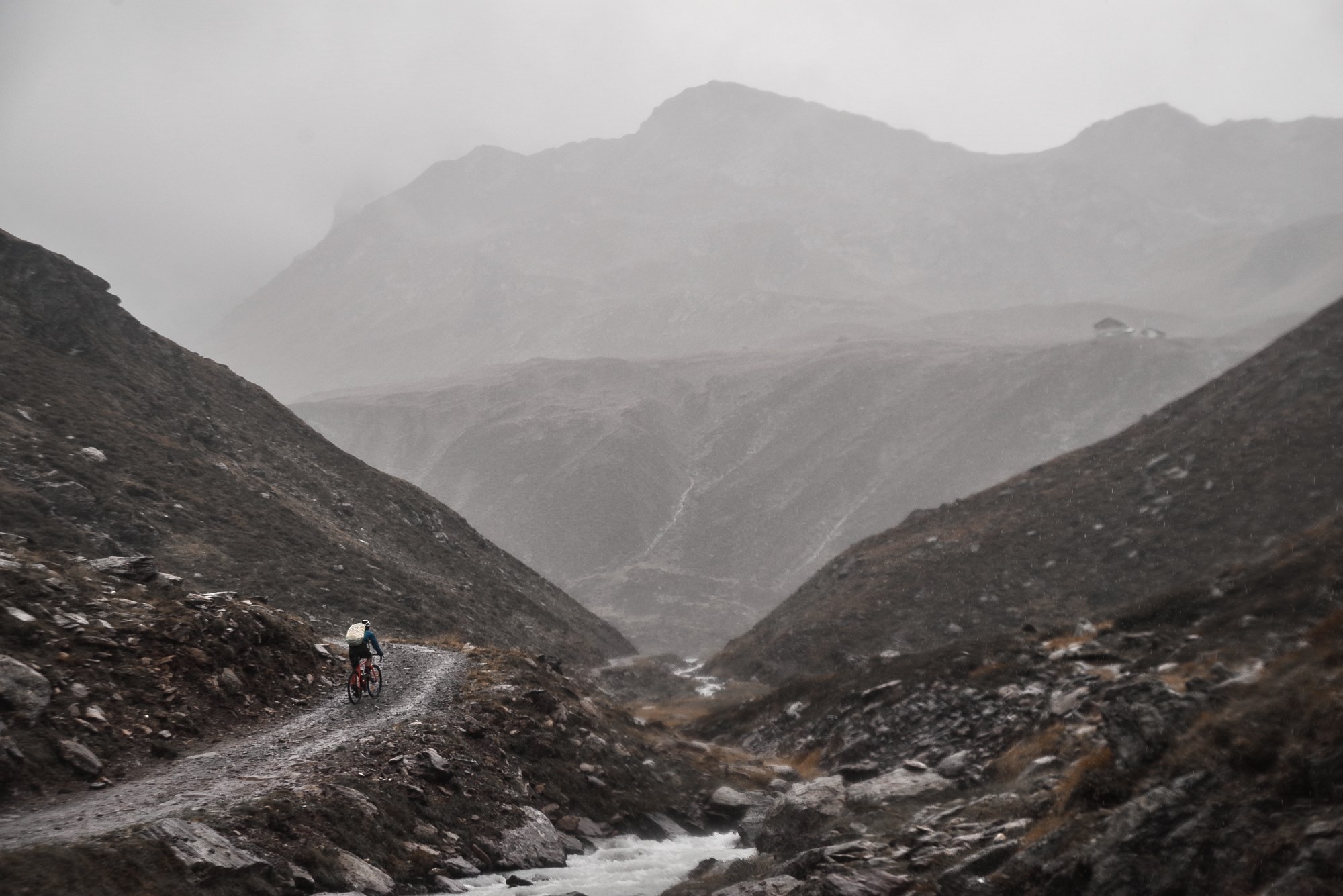
20 years ago, we found ourselves in almost the exact same spot, having just graduated. At that time, the trip represented somewhat of a turning point. It was the first big bike adventure for all of us. On aluminium hardtails, with analogue maps printed on actual paper, sawn-off toothbrushes (to save weight), and glass milk bottles in XXL bottle cages (we forgot to buy water bottles). We met a guy called Stefan at Enzian hut on the first evening. He told us about baby-head-size boulders at Pfunderer Joch, about the forbidden forest, about carbohydrates, and recovery times. We listened to him obediently – and when he went to bed at 9 pm, we ordered another round of beers.
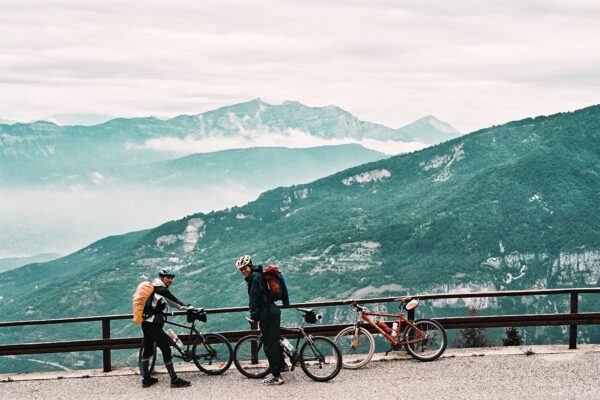
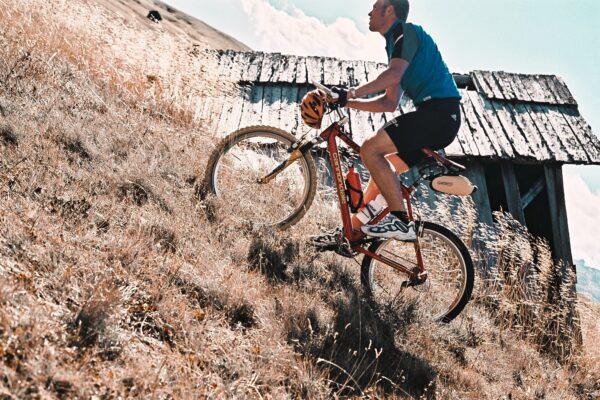
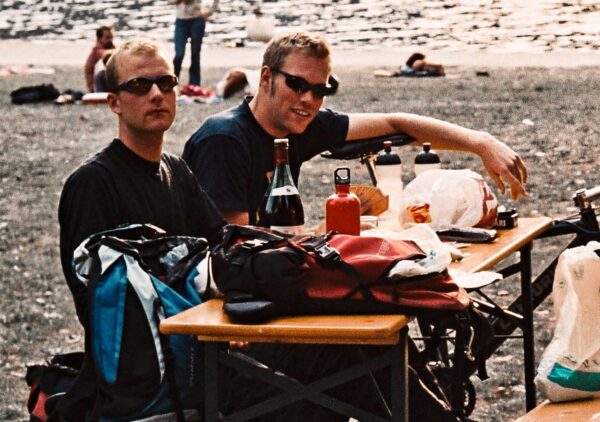
There’s a lot that’s different today. We ride lightweight gravel bikes, navigate via GPS, and let taxi drivers deliver left-behind wallets. We know how steep the next climb will be, when the next downpour will hit, and when the hotel sauna will close. Today, the biggest unknown is taking our bicycles on a German train, and the biggest danger is worrying too much.
So, 20 years later, it’s not about proving that we can ride from Innsbruck to Lake Garda. It’s about proving that we can still do it with the same sense of ease and joy. Without counting our macro- and micronutrients, without needing an all-clear from a sports physician, and without ruining our summer with training plans.
We want to convince ourselves that we haven’t just become bricks in the wall, or over-prepared Stefans, stuck in our routines, but that we’re still Antonio, Dominik, and Nils, who can throw caution to the wind and turn a tour into an adventure.
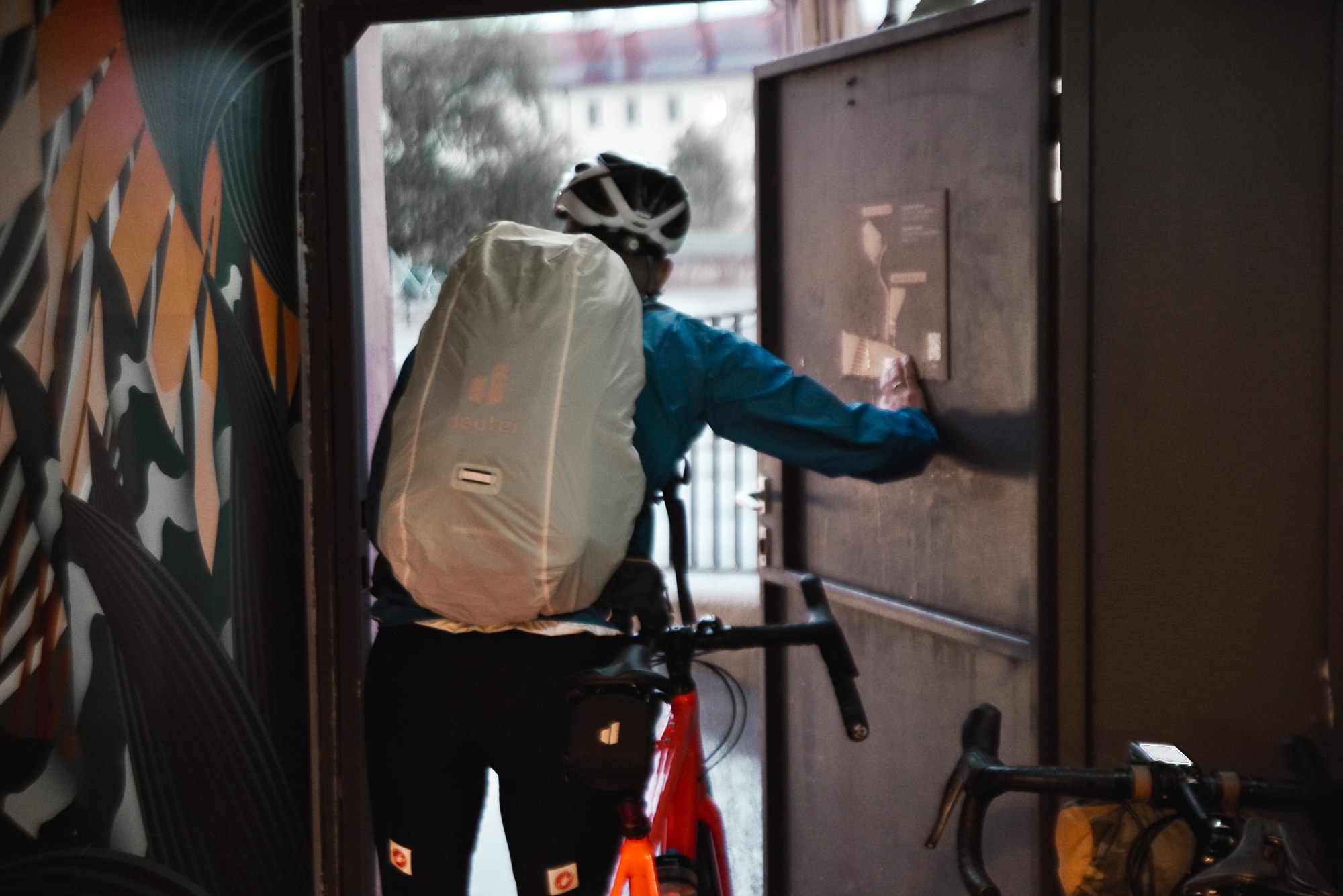
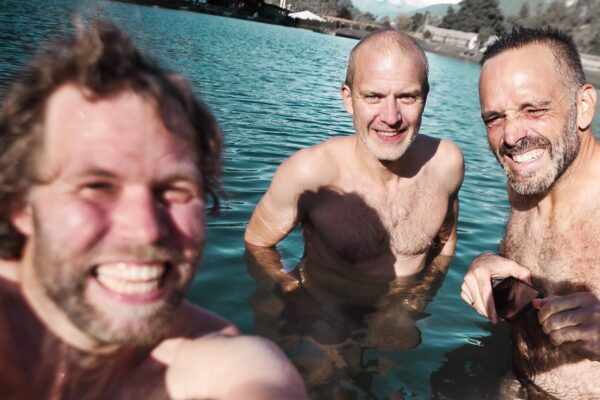

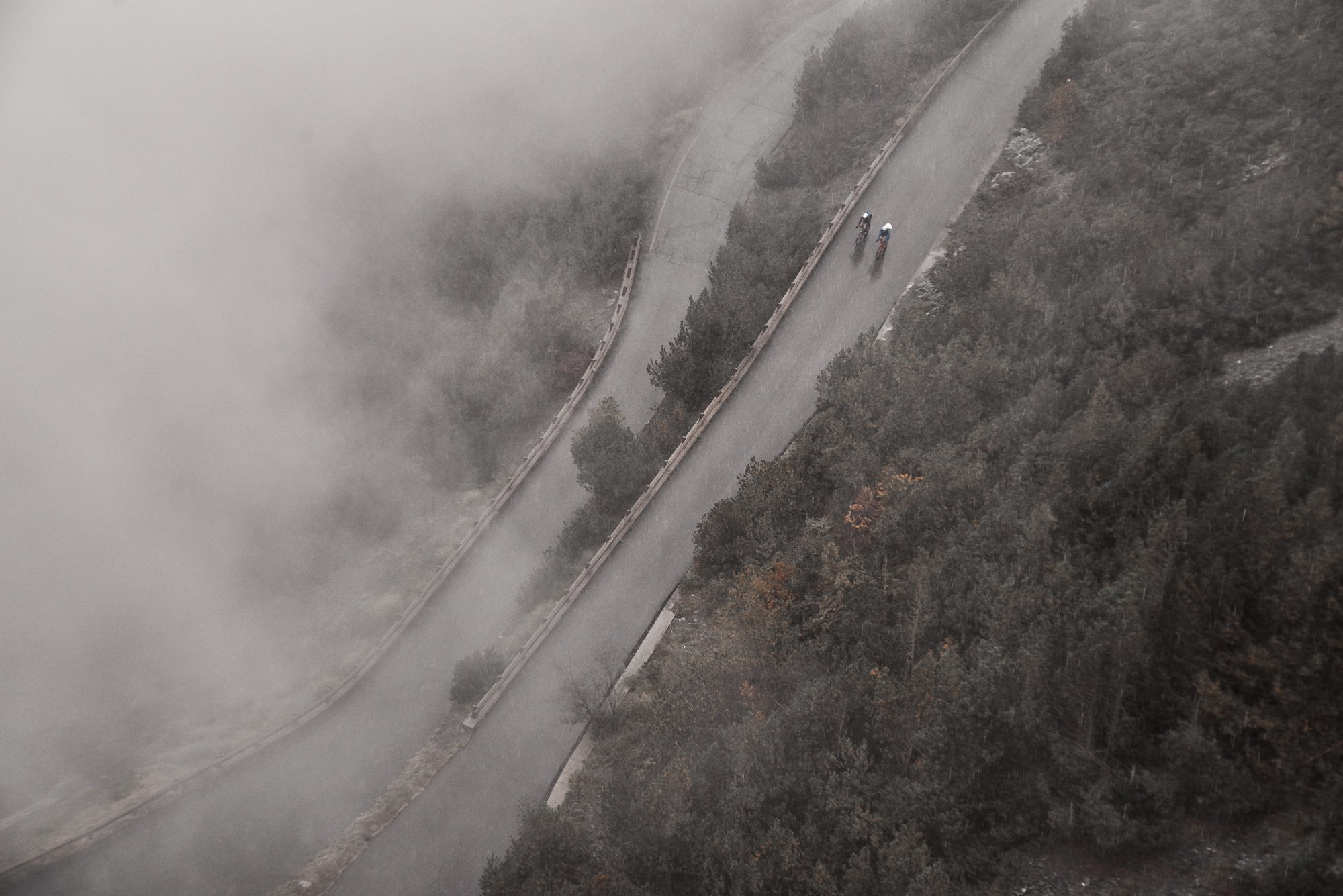
Day 1 – How much elevation gain can a friendship endure?
Antonio and Dominik hate me. I can feel the emotion through the fog. I push a little faster to escape their gaze. We’re hungry, everything is closed, and the path I had deemed rideable… well, not so much. I point out the beauty of the landscape, the special atmosphere caused by the low-hanging clouds, how lucky we are that it’s just rain and not thunder, the thrill of being at the mercy of the elements… But they’re not buying it. Even the horses in the muddy meadow seem passive-aggressive.
We cross a stream. The pushing section comes to an end – we must start carrying. 200 metres of climbing to Pforzheimer hut. The innkeeper just shakes his head. “Do many cyclists come here?” “You’re the first.”
As a Spaniard, Antonio doesn’t realise that there seems to be a certain concern about our mental health among the other patrons in the hut. I smile, translate the heavy rain alert as “todo bien”, and we trudge on.
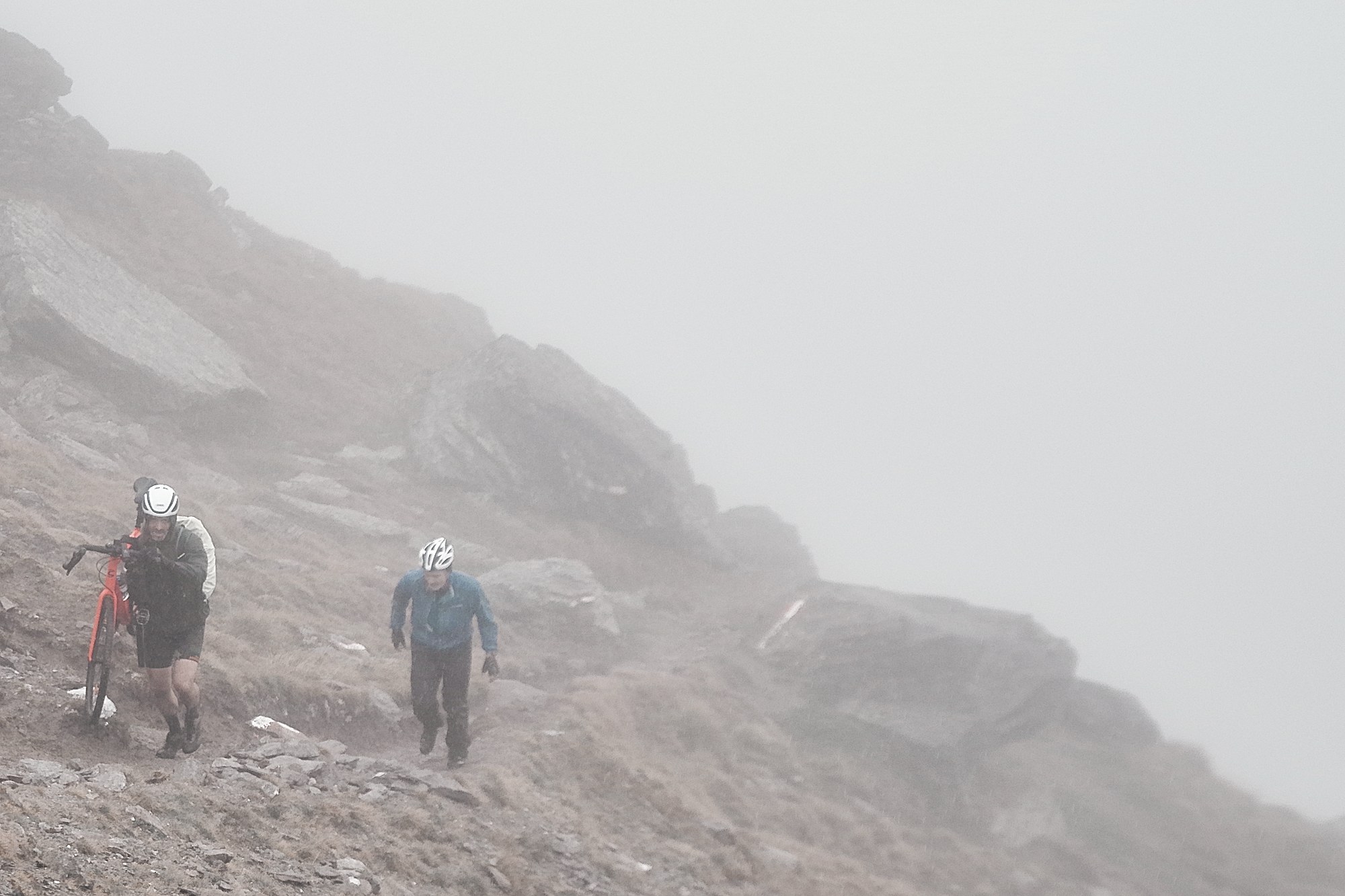
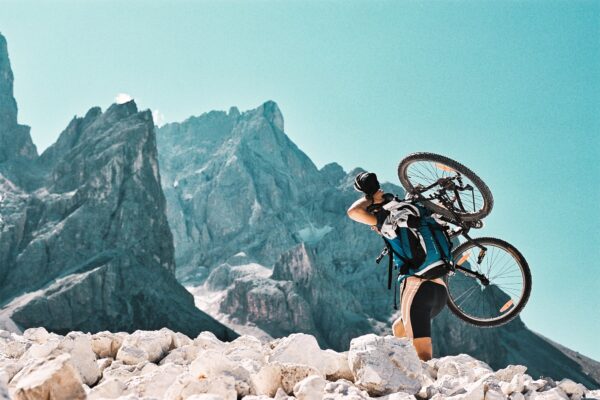
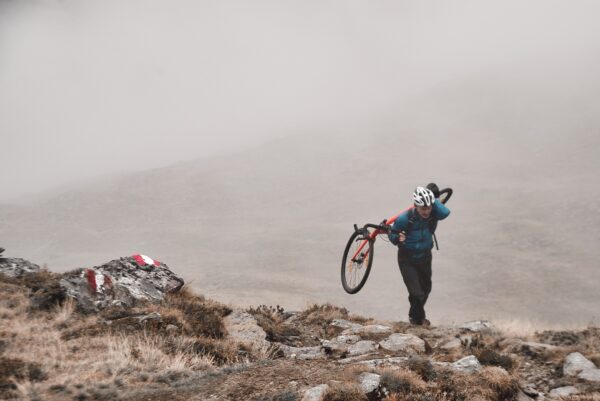
When planning the route in midsummer, at 30 degrees Celsius and with a gin and tonic in hand, I had whimsically set a few waypoints on hiking trails and forced Komoot to integrate them into the route. The result now towers in front of us like a wall. A high alpine hiking trail. We’ve got another 400 metres of climbing up to Gleirschjöchl with our bikes on our backs. It’s a good thing we didn´t bring ebikes. They would be a lot harder to carry. From time to time we meet hikers. Compassion mingles with incomprehension. The last 100 metres of climbing is so steep that it breaks our pride. We leave our bikes behind, drop our backpacks off at the top, and return to fetch our bikes – and we repeat the process to go down the other side. Carrying a bike down the mountain is an emotional low. The path has turned into a stream, and our shoes will never smell the same, but the memories will outlast any of the foul odours. A thorn bush puts an end to my sentimentality and brings me back to spiky reality. Then, finally, we reach Schweinfurter hut. Fully occupied by school children on an outing.
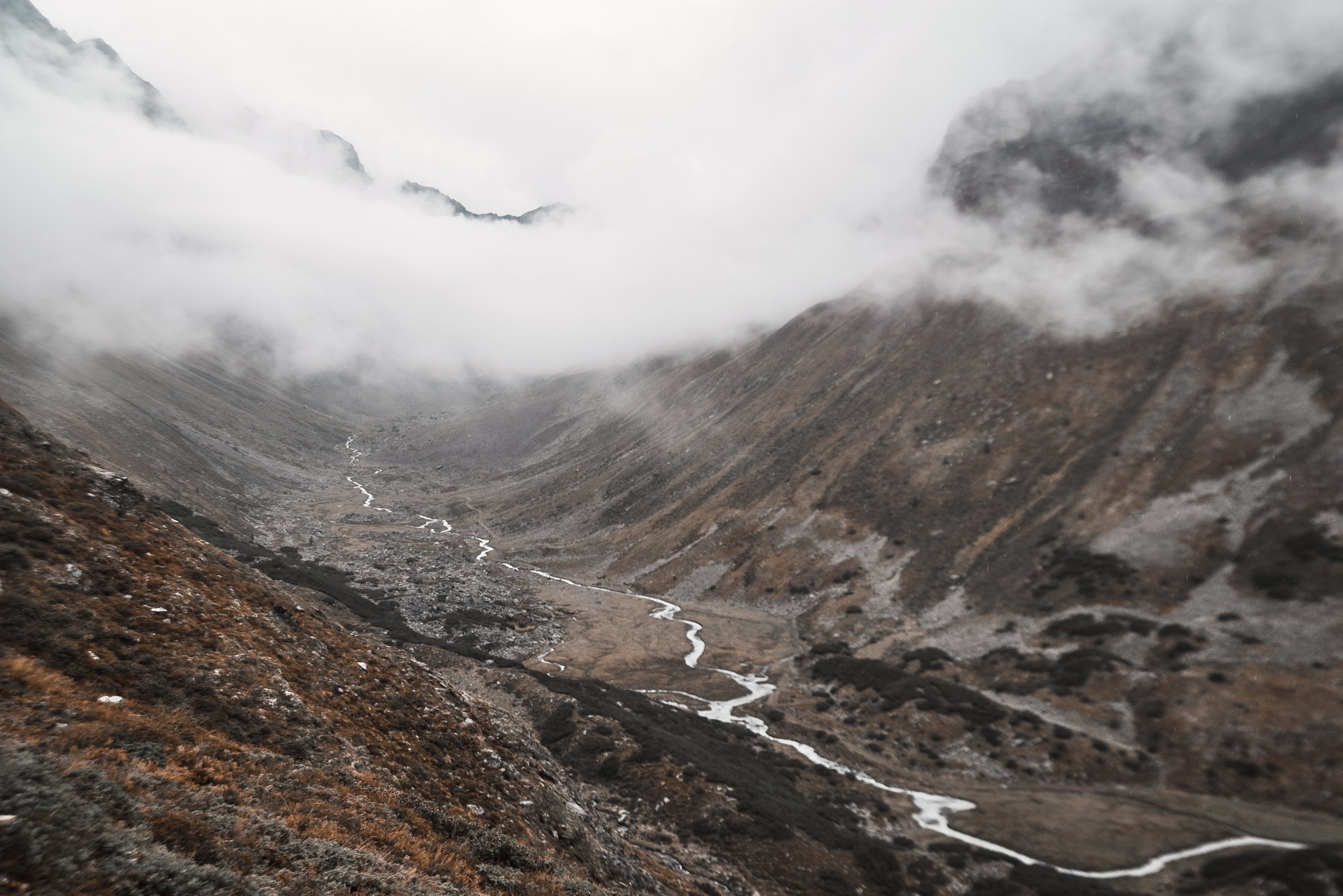
As a matter of principle, I refuse to book stays in advance. Antonio and Dominik would have done it differently, and all arguments are on their side right now. What makes us a great team, however, is that we just spring into action in moments like these. 3 minutes later, we’ve found an amazing hotel with a bike workshop, washing machine, and sauna, and we plunge into the descent to Umhausen. Bye bye, alpine huts. Bonjour, wellness.
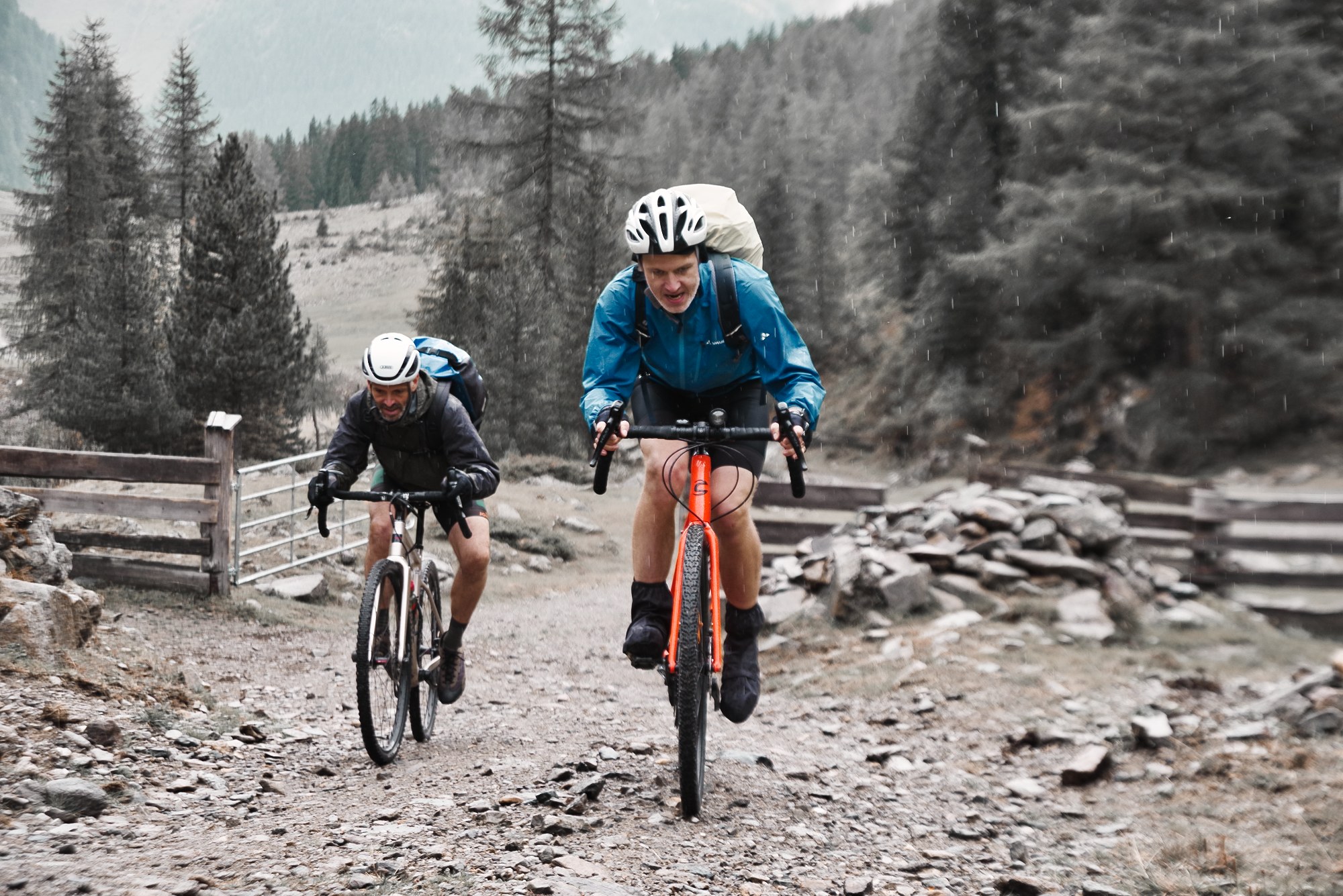
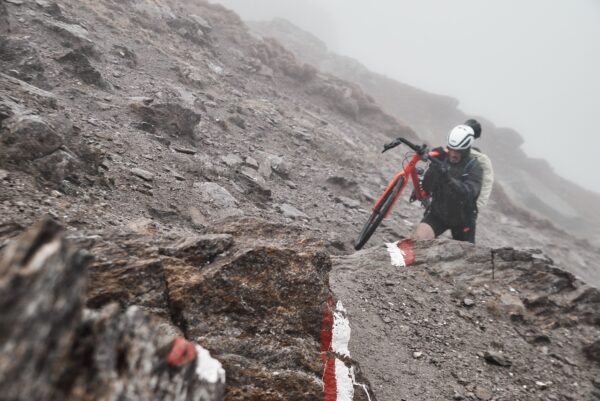
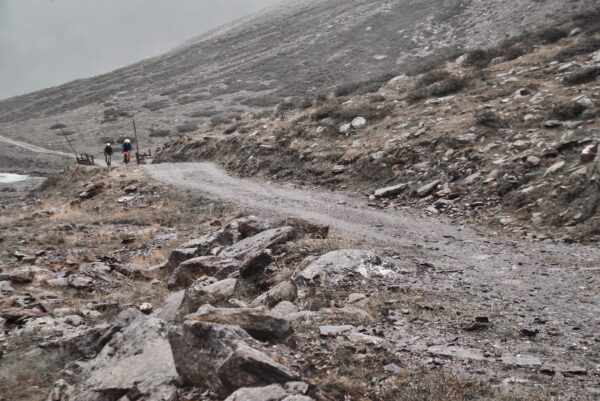
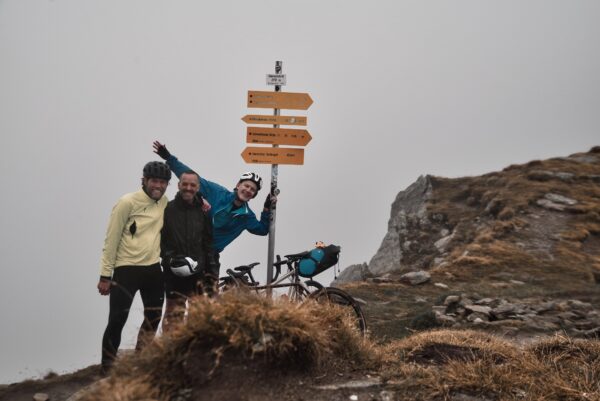
Day 2 – Good times and Kaiserschmarrn
Down Ötztal, up Inntal. I’m not a huge fan of bike paths, but these are the best. We’ve got a tailwind and whizz along all the way to Landeck. As was the case back then, we can’t help but test how we measure up against each other. “Un poco de ritmo” means that Antonio attacks every climb as if he were in the final of the Tour of Flanders. Dominik and I pretend it doesn’t hurt. We hate it – and love it at the same time. We arrive in Landeck completely exhausted. This is where we stop to fuel up on sun and carbohydrates. It’s all good times and Kaiserschmarrn (fluffy, shredded pancakes). That is, until Antonio notices that he left his jacket, which contains his wallet, back in the hotel, which is now 50 km away.
It’s moments like these that make or break a trip. Should we ride back together and lose a day, split up as a group and leave the rest to fate, or discuss our options until it gets dark? It may sound weird, but we enjoy situations like these. A spanner in the works that brings us together with people who, in most cases, are happy to help. 10 minutes later, we have found a taxi driver who is willing to bring our jacket and wallet to Landeck for a fair price. It’s great when a problem presents you with the opportunity to prove to each other that you can overcome it without further problems.
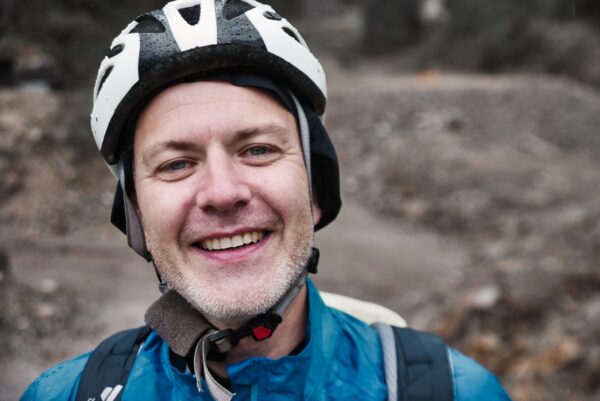
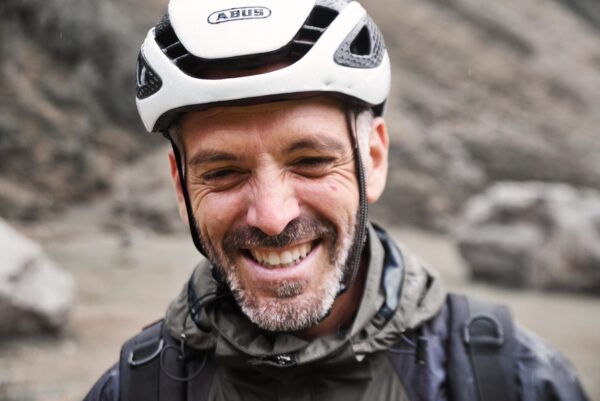
We celebrate the extended break with even more Kaiserschmarrn and coffee, continue racing all the way to Scuol, and pay 10 Euros in roaming fees before even realising that we’re in Switzerland. The police turn out to be more gracious than the mobile phone mafia, and kindly point out to us that a construction site traffic light is still a traffic light and mustn’t be crossed when red. 20 years ago, we avoided Switzerland for budgetary reasons. Today, we reluctantly fork over 135 euros for spaghetti bolognese and drinks, and appreciate that at least the spaghetti was really good.

HL part 2: After the rain comes the sauna
Day 3 – The perfect setup for adventure is imperfect
Product insights, tuning tips, equipment – must haves? Until now, it didn’t matter. On the first day, we carried our bikes almost all the way. On the second, we spent the majority of the time riding on asphalt. Today, the chaff is separated from the wheat.
Antonio and I are running 1x drivetrains with 40/42 t chainrings and we could have killed for Dominik’s 2x crankset. Riding 5 km on gravel with an average gradient of 10% and luggage puts an abrupt end to my enthusiasm for the simplicity of 1x setups. Either I need a smaller chainring up front or a larger cassette at the rear, but my gearing ratios aren’t set up for adventure. Or are they? What was that about perfectionism? Maybe it’s just a matter of dealing with what the mountain throws at you even without the perfect setup. The frustration goes, the lactic acid comes.
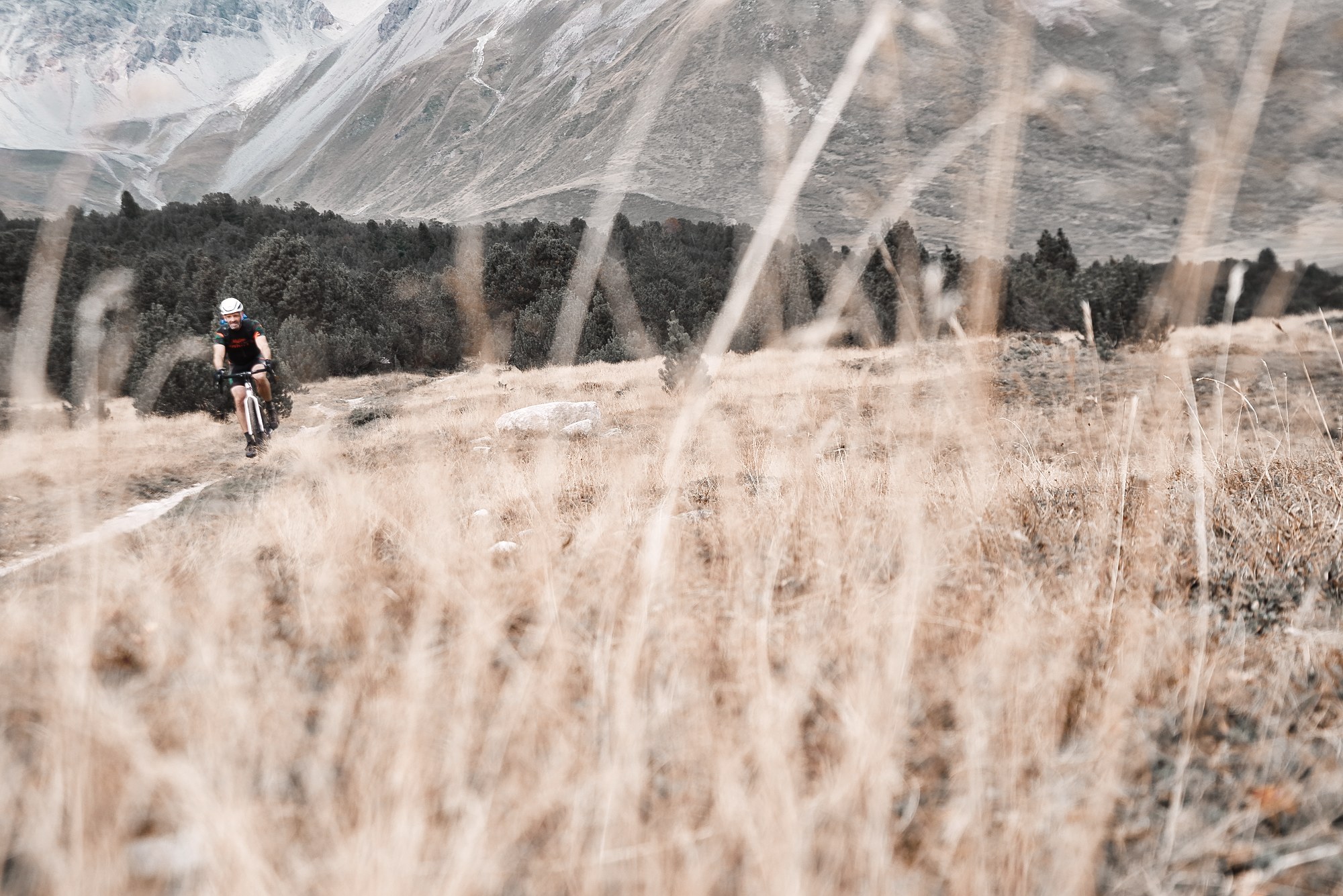
On the second pass, we meet a group of mountain bikers, winching their way up to the summit with much more suitable gear ratios and looking as fresh as if they had just stepped off the cover of ENDURO. Is it the age or is it the setup? We swear it’s the latter and try to ignore the cramps with as much dignity as we can muster.
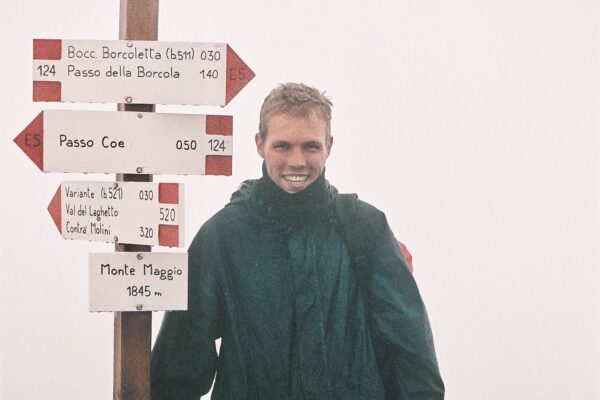
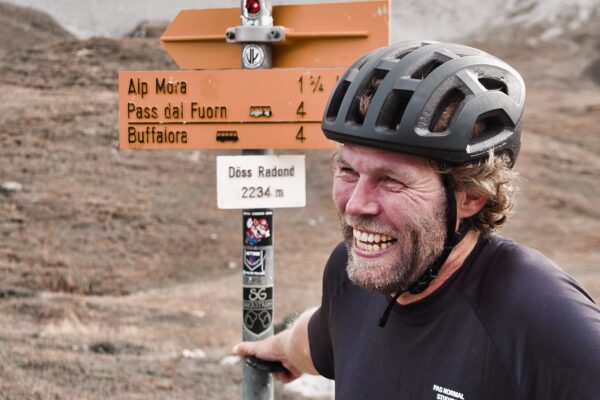
The route is amazing. Over the Pass de Costainas down to Val Müstair, up the unspectacular sounding Döss Radond, and into the spectacular Val Mora. Gravel is brilliant here. Between wild horses, we cruise through a high alpine valley surrounded by 3,000 m peaks, and descend a barely rideable trail to Lago di San Giacomo. Rain hits again as we make our way down to Bormio. At last, we’re in Italy, rolling towards a 1,000-year-old lodging at dusk. 4th floor. No lift. Timeless style. With our last remaining strength, we try our best to do the grandezza justice.
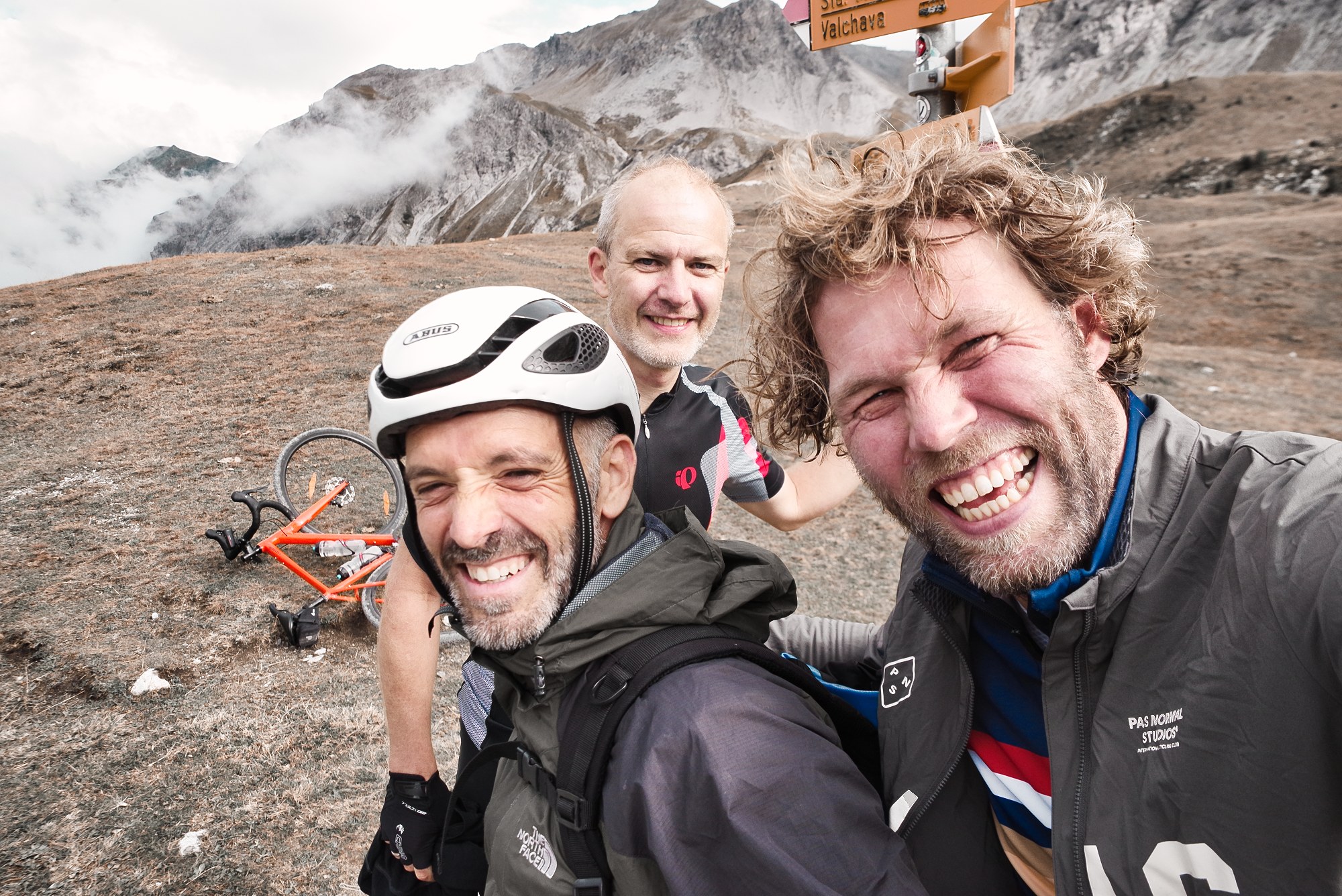
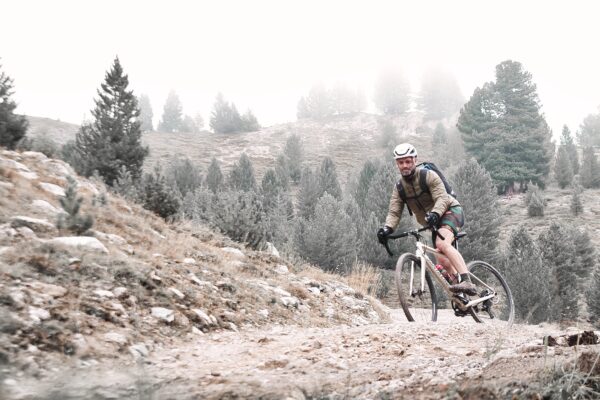


Day 4 – 13% is… unfortunately steep
Team meeting at breakfast. The planned route will take us along a gravel trail to Gavia Pass. Dominik and Antonio probe diplomatically whether the asphalt route wouldn’t also be an option. After the day we had yesterday and the Gleirschjöchl hike-a-bike fiasco, I’m ready to make concessions. The “Stefan” in me offers some half-hearted resistance, but when Antonio warms up his calves for the gravel trail, I get scared and suddenly love the asphalt option.
20 years ago, we would have stuck to the original route. Not doing so would have seemed like a failure to us. Skipping challenges would have made finishing feel hollow. We see things a little more flexibly today. An easier, quicker route means one good conversation more, one extra coffee in a quaint bar, or an additional sauna session. A route downgrade can also be an experience upgrade. Would Stefan have done the same? Definitely not. So, it’s all good.
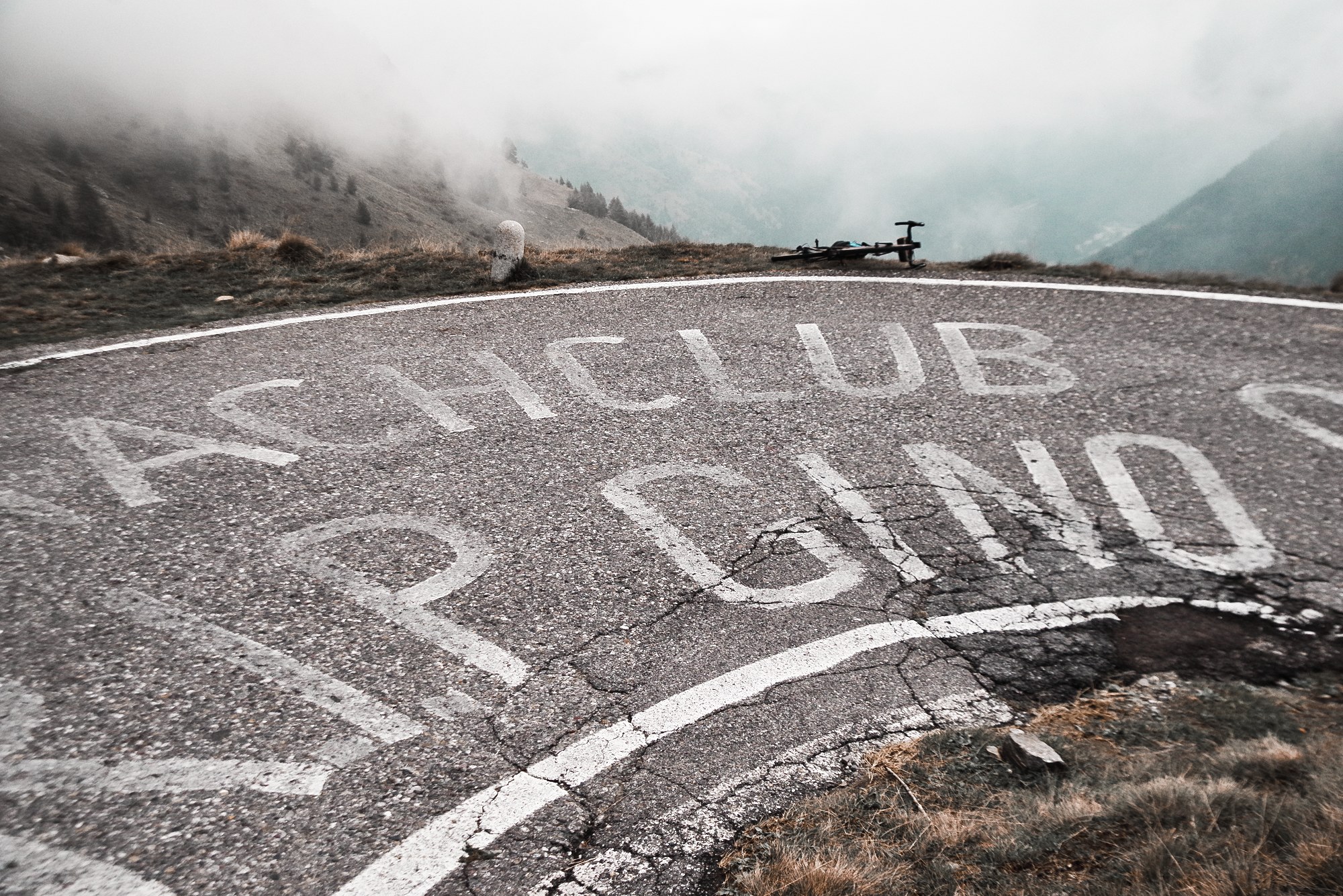
Too bad that Gavia Pass is mean even without gravel. We chose the easier way only to realise that it’s anything but easy. Bad for your head, bad for your legs. 13% is… unfortunately steep. At 7 degrees Celsius, in the rain, again, we crawl up the pass and towards the refugio, surprised to hear Bavarian folk music. We appreciate the many beautiful road bikes, and warm ourselves with herbal tea. Herbal tea? Back then… You get the drift.
At the top, Dominik gets taken back in time. He meets his old PE teacher. There is probably nothing bigger for a PE teacher than seeing a former student bikepacking up Gavia Pass 30 years later. With an inner warmth, we step into the fog and let the frosty wind kill any sentimental thoughts on the descent. Somewhat listless, we ride through the impressive ugliness of a ski resort in September to Passo Tonale, looking very specifically for accommodation with a sauna.
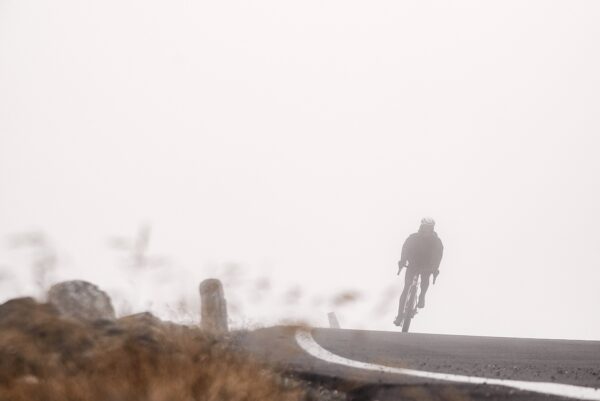


Day 5 – Finally 12 again
Just a short distance up to Madonna di Campiglio, and then it’s downhill all the way to the lago. The euphoria of the final day is deceptive, and I always fall for it. On the descent, a roadie overtakes us. My competitive drive kicks in. We chase after him for 15 km, drafting behind cars, cutting corners through roundabouts. We’re 24 again. No, 12. The cyclist turns off without ever realising that he was being chased. My Hammerhead blinks wildly. We had to turn right 5 km ago. Sorry guys. When we get to the top of the pass, we’re 64.
We roll down, eat pizza, drink tons of soda and let the sugar rush fuel our euphoria, entering a tree trunk pulling competition at a village festival. We’re pretty dismal. The local children have probably never seen such a disgraceful performance in 1,000 years of village history. Someone brings us 3 beers and rescues the tree trunk from its misery. In our mid-20s, we would have either had the arrogance to believe that we could win the competition, or the fear that we would terribly embarrass ourselves. Today, it doesn’t matter. What does matter is the pulled muscle, which will remind me a week later that crossing the Alps is nothing compared to forestry work. Our suffering is a luxury. The senseless waste of energy is almost decadent. That must be why it feels so good.
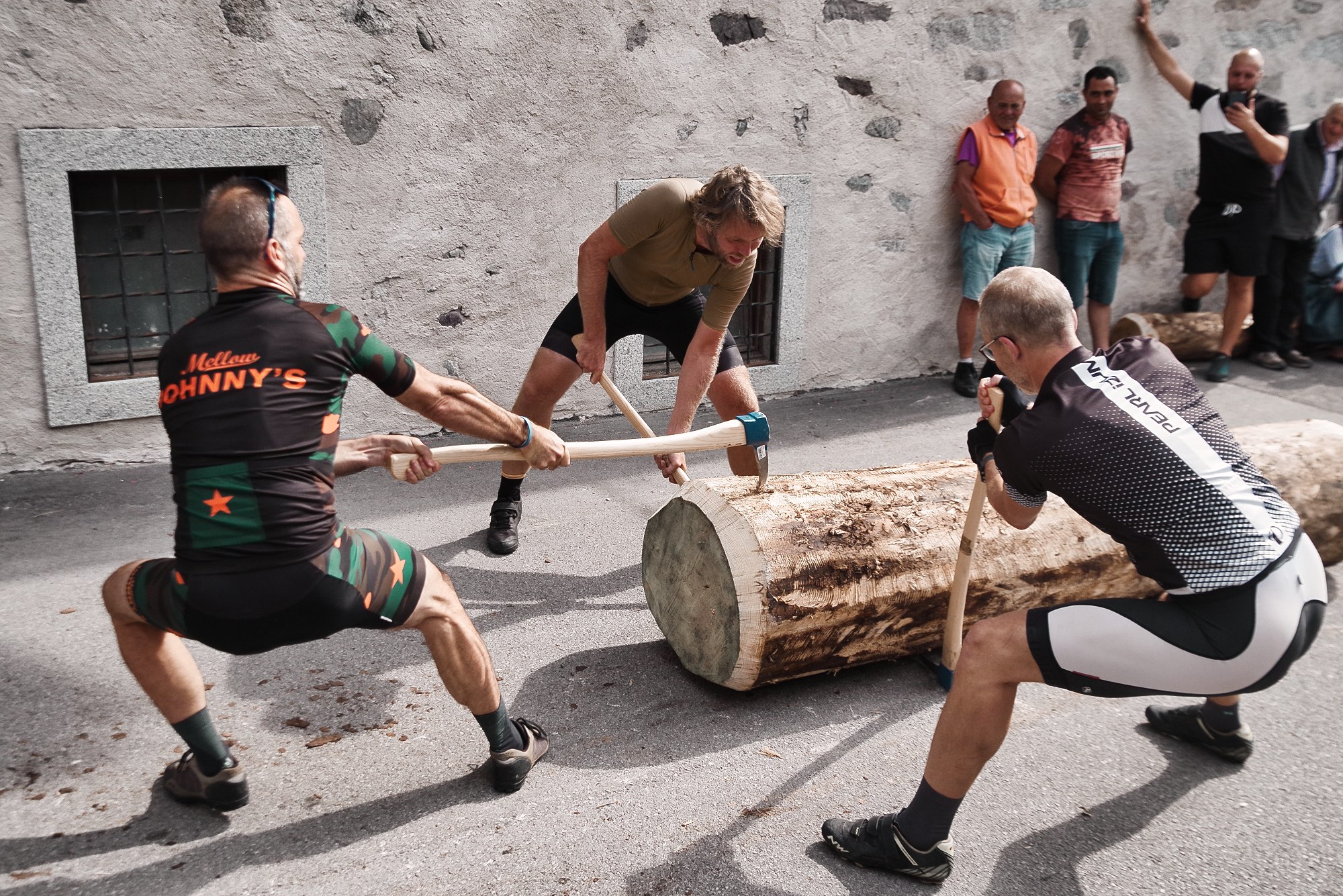
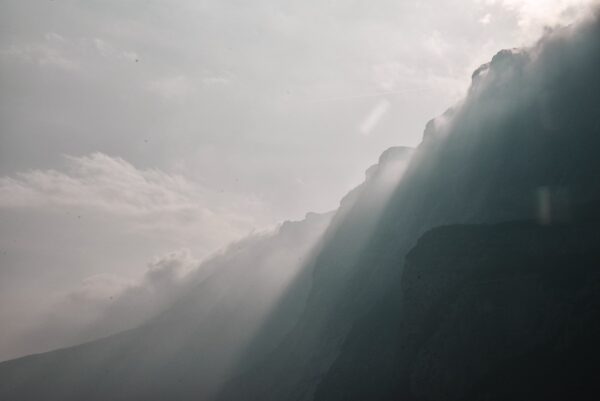

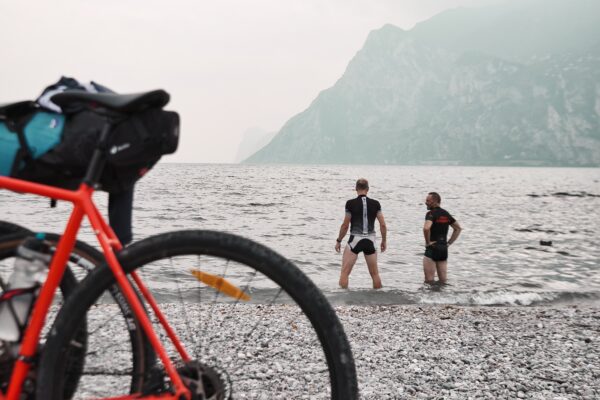
We roll the rest of the way. At some point, a chain breaks, but we’re so relaxed now that it doesn’t surprise us to – quite miraculously – find the quick link on the road. With every kilometre that passes, our demeanour improves. We glide through the mass of day tour riders – calm, determined, and confident. We feel the lake, we hear the waves. The gravel crunches under our wheels. We stretch our backs, get off the bike, look around, look at each other – no Stefan far and wide. We take our shoes off and… Ouch! The stones…
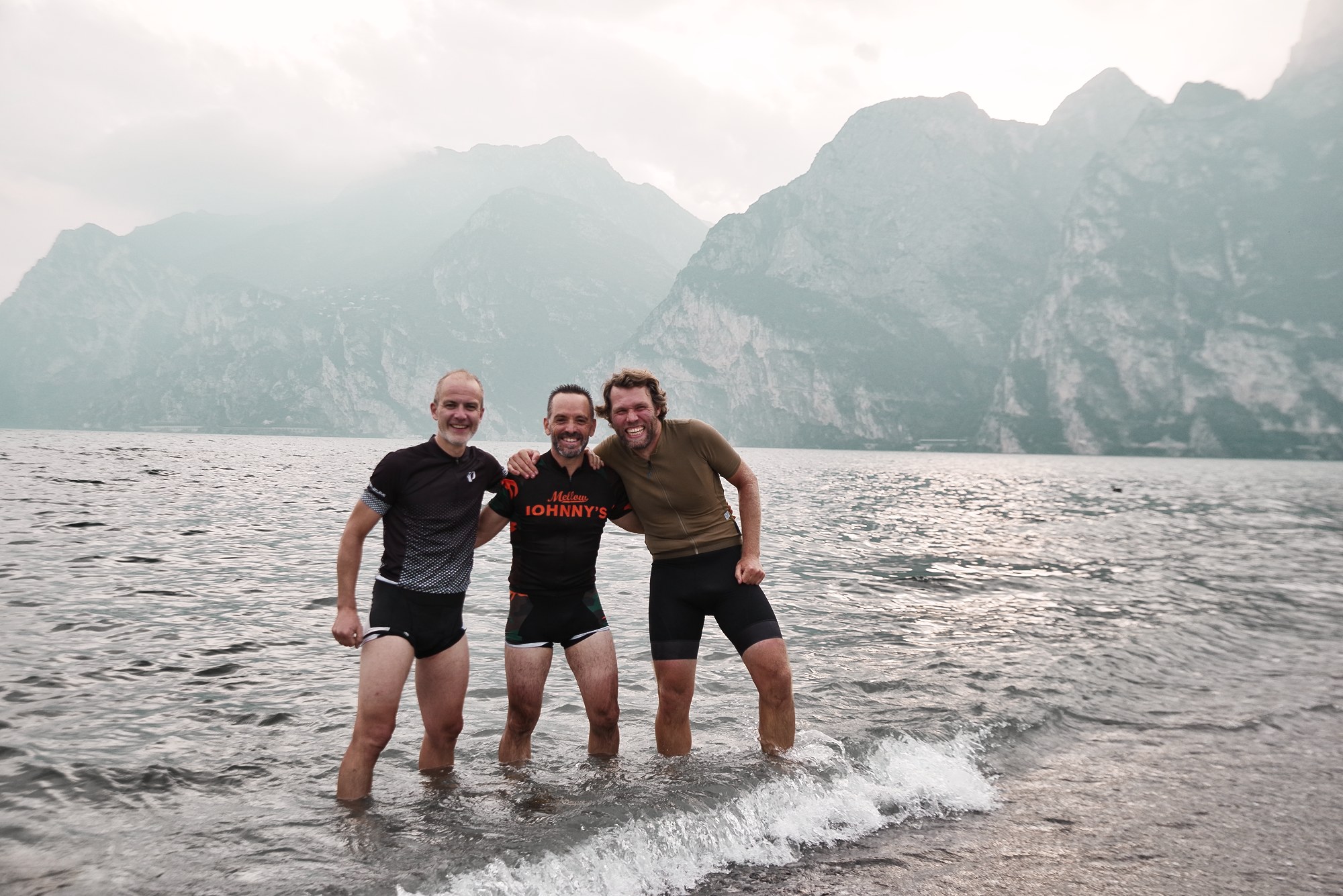
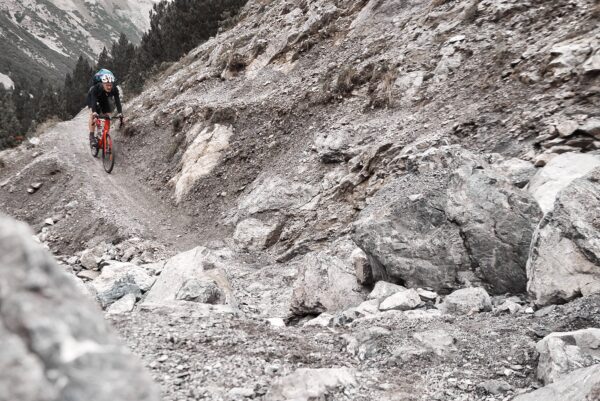
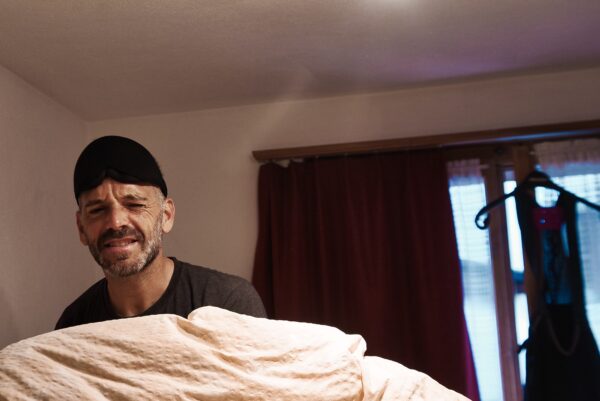
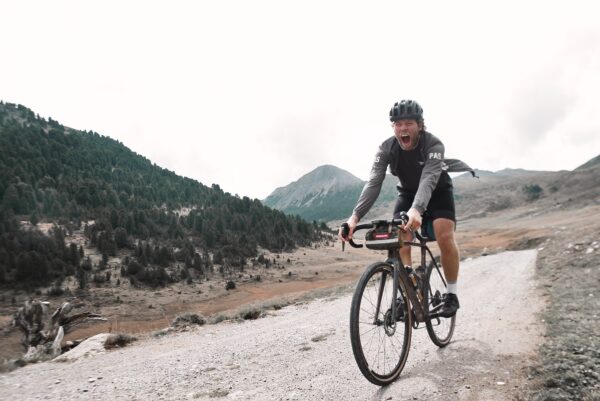
Did you enjoy this article? If so, we would be stoked if you decide to support us with a monthly contribution. By becoming a supporter of GRAN FONDO, you will help secure a sustainable future for high-quality cycling journalism. Click here to learn more.
Words: Nils Hofmeister Photos: Hendrik Kellner, Dominik Daling, Nils Hofmeister





